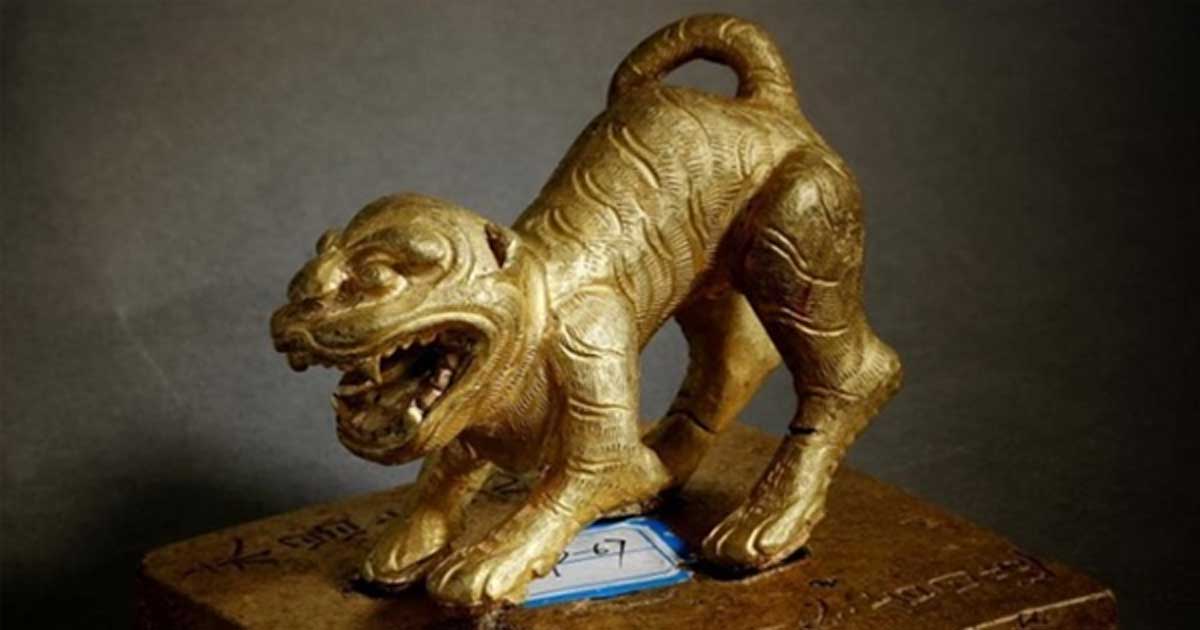Chinese archaeologists announced yesterday the discovery of an immense underwater treasure.
They stated that they recovered more than 10,000 gold and silver items which had been sitting at the bottom of a river in southwestern Sichuan Province for more than three centuries.

There Was More Than One Cleopatra in Ancient EgyptDiscovery Verifies Unproven Battle as a Historical Event
Mr. Gao Dalun, director of Sichuan Provincial Cultural Relics and Archaeology Research Institute, stated that the finds included a vast amount of gold, silver, and bronze coins and jewelry, as well as iron weapons such as swords, knives, and spears. The archaeologists that made the discovery added that the characters carved in the gold and silver artifacts are still clear and the carved patterns on the jewelry show graceful craftsmanship.

Golden ingot and jewelry unearthed during an archaeological excavation in southwest China’s Sichuan Province, where more than 10,000 gold and silver items make up a treasure that sank to the bottom of a river over 300 years ago. ( Xinhua/Li He )
The treasure site, positioned at the crossing of Minjiang River and its branch Jinjiang River, is 31 miles (49.89 km) south of Chengdu. It is thought that in 1646, peasant uprising leader Zhang Xianzhong was defeated in the area by Ming Dynasty soldiers while trying to transport his treasure to the south. Nearly a thousand boats loaded with the valuables sank in the fight and were buried in the river bed. However, for centuries this story was more myth than fact, with no reliable sources verifying it. Wang Wei, a Chinese archaeologist stated as The Hindu reports , “The objects have helped identify the area where the battle was fought and are direct evidence of this historical event.”

Silver coins were some of the treasures unearthed during excavations in Sichuan, China. ( Xinhua/Chen Xie )
The Importance of the Treasure from a Scientific and Historical Point of View
Many valuable objects were found at the site back in 2005, when construction workers found seven silver ingots on the river bank. Five years later, and after the close examination of the finds, local authorities declared the area a protected site in 2010. Despite the evidence, however, a comprehensive excavation didn’t follow as experts argued over the existence of the legendary “sunken boats.”

The treasure found in in Sichuan, China also includes these silver ingots with writing still visible on them. ( Xinhua/Li He )
Treasure hunters, on the other hand, were not as patient, as the facts clearly showed: after the local police conducted a year-long investigation in 2015, they arrested over thirty suspects and impounded thousands of gold and silver coins. That nudged experts to agree that an immediate excavation of the site was necessary in order to prevent further raids from treasure hunters. Eventually, Sichuan province launched the project to uncover the hidden treasures and artifacts in January, when the dry season arrived, and they pumped away the river water.

Excavating the site where the treasure was found in Sichuan, China. ( XINHUA)
In closing, Li Boqian, an archaeologist from Peking University, thinks that the objects of this discovery are of remarkable value and historical significance, “The items are extremely valuable to science, history and art. They are of great significance for research into the political, economic, military and social lives of the Ming Dynasty,” said Boqian.
Src: ancient-origins.net







